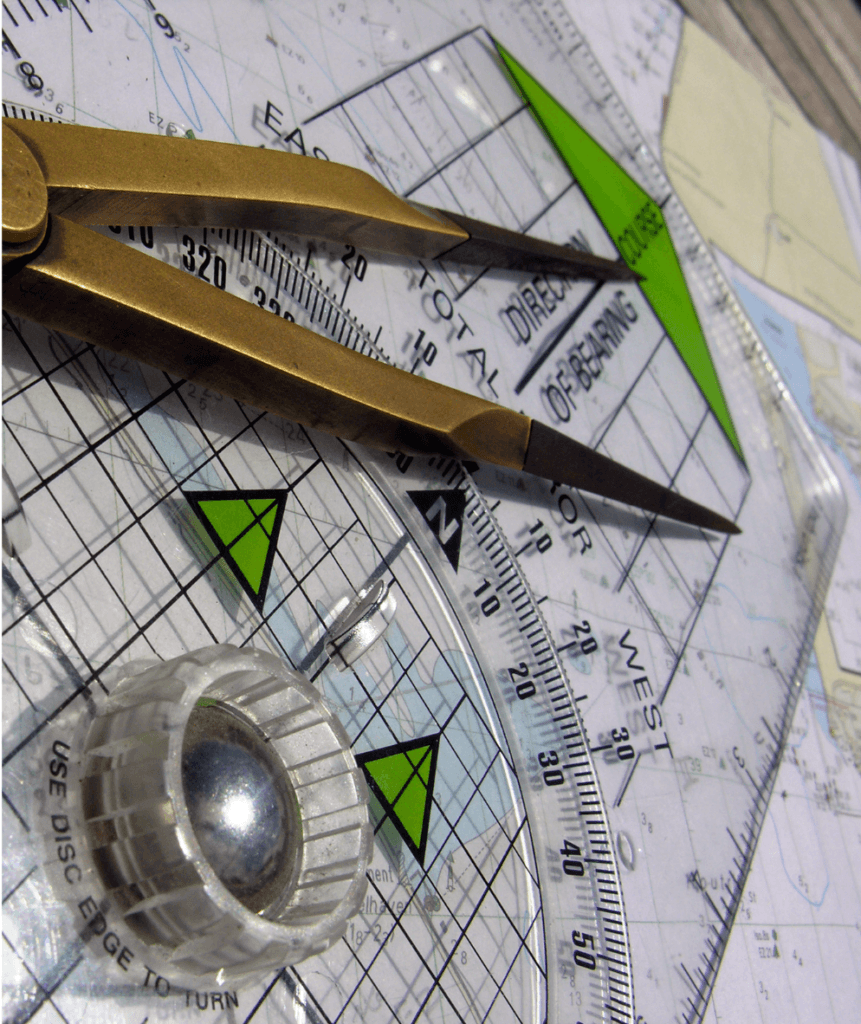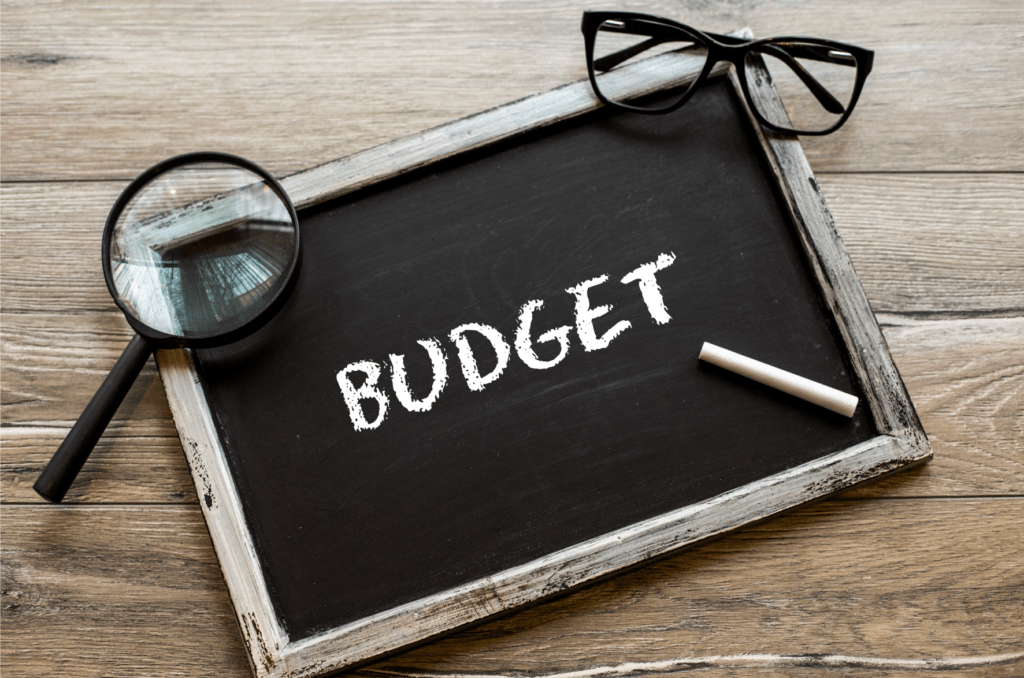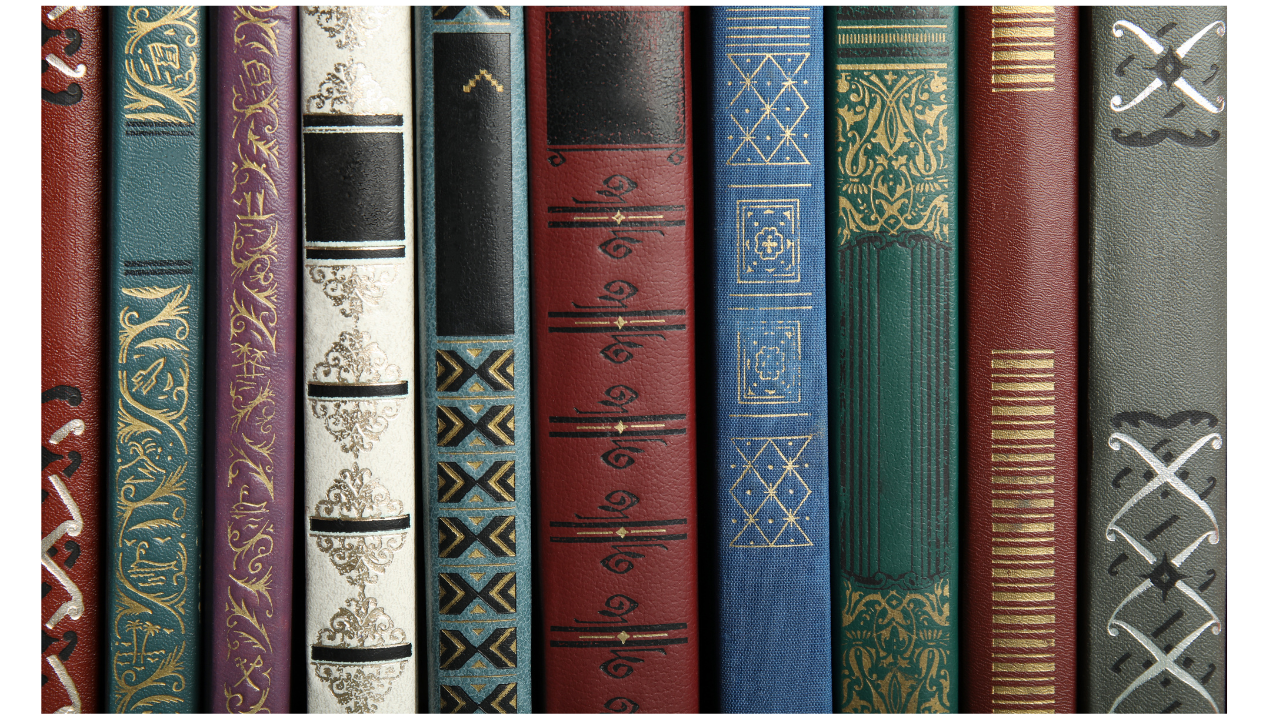Are you ready to step into the enchanting world of book collecting? Whether you’re a seasoned reader or just beginning to dip your toes into starting a book collection, you’re in for a real adventure.
I’m here to guide you through this journey, sharing insights and stories that I’ve gathered along the way.
Book collecting isn’t just about hoarding a bunch of old books on a shelf. It’s an art, a passion, and for many, a lifelong pursuit that’s as thrilling as it is fulfilling.
From the quiet excitement of discovering a rare edition in a dusty old bookstore to the vibrant buzz of a lively book auction, this hobby opens up a universe of stories, history, and connections.
In this blog post, we’ll explore everything from the basics of getting started, to understanding the nitty-gritty of book terminology, to learning how to care for your precious finds.
We’ll dive into the heartwarming and sometimes wild stories of legendary collectors and offer practical advice on expanding and curating your own collection.
So, grab a cup of your favorite beverage, settle into your comfiest chair, and join me on this journey through the pages of book collecting.
Whether you’re looking to create a collection that reflects your personal taste, or hoping to find valuable treasures, or just want to revel in the joy of books, there’s something here for everyone.
Let’s turn the page and begin this exciting chapter together!
🔔 Please subscribe to our Youtube channel
Getting to Know the World of Book Collecting
So, you’re curious about book collecting? It’s a fascinating world, more than just piling up books on shelves. It’s about hunting down books that mean something special to you, that have a piece of history, or maybe even hold some investment value.
This isn’t a new craze; it’s been around for ages. Think of those grand old libraries in castles and estates – they weren’t just for show. They were (and still are) treasure troves of culture and history.
Back in the day, book collecting was kind of an elite sport. The big shots – nobles, scholars – they were the ones building these impressive libraries.
These collections were a peek into their world: what they loved, what they knew, what they wanted to show off. Fast forward to today, and it’s a whole different ball game.
Now, it’s not just for the elites; anyone can jump in. From someone who just loves to read to someone who’s eyeing the rarest editions out there.
The Difference Between Collecting and Just Having Lots of Books
Let’s clear something up. There’s a big difference between just having a bunch of books and being a collector. You know how it goes – you see a book that catches your eye, you buy it, and it joins your ever-growing pile.
That’s cool and all, but it’s pretty spontaneous. There’s no plan or theme.
But if you’re serious about collecting, it’s a whole different game. It’s like being on a mission. You might be all about a certain genre, a specific author, or books from a particular era.
And you’re not just grabbing any copy. You’re on the lookout for those special ones – the first editions, the signed copies, the ones that have a story to tell.
Every book you add is a piece of the puzzle, making your collection a reflection of who you are and what you love.
And here’s the kicker – it’s not just about getting these books; it’s about keeping them in tip-top shape. Serious collectors know their stuff about book conditions, and they go the extra mile to keep their books looking great.
After all, a well-preserved book is like a gem in your collection.
Book collecting can be a fulfilling journey, a thrilling ride into the past, present, and future of the written word.
Charting Your Course in the World of Book Collecting

There are probably as many ways to start a book collection as they are individuals. The first thing you probably need to figure out is what really grabs your attention. Are you all about those spine-tingling mysteries or maybe sci-fi adventures that whisk you off to another world?
Or perhaps it’s certain authors that speak to you, or you’ve got a thing for books from a specific slice of history. A safe way to start a collection is by looking at yourself in the mirror and ask: What am I passionate about?
Be patient. You are not going to get an answer right away. But keep asking the question as you hunt for books. You will get the answer at one point
Say you can’t get enough of Victorian-era stories – then hunting down works by Charles Dickens or Jane Austen might be your thing.
Or if you’re a World War II buff, then diving into military history books could be your alley.
Zooming In on Your Focus
After you’ve got a handle on what tickles your fancy, it’s time to get more focused. See, the pros in book collecting don’t just grab anything off the shelf; they zero in on specific kinds.
Maybe you’ve got a thing for first editions, or perhaps signed copies are what get you excited. Or, if you love the feel of history in your hands, then rare manuscripts might be your goal.
Each of these paths has its own little adventures and rewards. For example, snagging a first edition of a classic novel can feel like striking gold, both emotionally and, sometimes, financially.
A book signed by the author? That’s like having a personal connection with them. And old manuscripts, well, they’re like time machines in your hands.
Mixing Passion with Smart Investing
Now, most folks start collecting because they love books, but let’s not forget the investment side of things.
A well-picked collection can actually grow in value over time. But here’s the catch – not every book is going to make you a millionaire.
The book world’s a bit like the stock market; what’s valuable today might not be tomorrow. So do your homework. Keep an eye on what kinds of editions collectors are buzzing about.
But hey, at the end of the day, go with what you love. A collection that brings you joy is priceless, no matter what the price tag says.
There is a saying in the book collecting world: “if you want to get rich collecting books, ask your rich uncle for money.“
I can give you my perspective as a book seller: It’s very hard to make a living selling used books, but I am passionate about it and don’t mind the sacrifice.
Book Collecting Lingo: The Essentials
Breaking Down the Jargon
So, you’re dipping your toes into book collecting? Awesome! But let me tell you, this world has its own language. Let’s crack some of this lingo, so you’re not scratching your head when you hear these terms.
- First Edition: This is like the debut album of a book – the very first run of copies that hit the shelves. For collectors, first editions are like gold, especially if it’s from a famous author or a groundbreaking work.
- Mint Condition: Picture a book that’s so fresh and clean, it’s as if it just came off the printing press. That’s mint condition for you. No creases, no dog-eared pages – just pristine.
- Provenance: This one’s about a book’s backstory – who’s owned it through the years. If it sat on the shelf of someone famous, its cool factor (and value) goes up.
- Rare: In simple terms, it’s how often you find this book. The harder it is to spot in the wild, the more precious it becomes.
- Antiquarian: This is for the really old and rare stuff, like books printed before the 19th century. It’s the realm of the classics.
- Dust Jacket: That paper cover on hardbacks? That’s the dust jacket. Keep it in good shape, especially on older books, and you’ve just upped your book’s value.
- Foxing: Those little brown spots you see on old book pages? That’s foxing. A common thing, but too much of it can drop a book’s value.
Why Condition and Rarity Matter
Now, condition and rarity are biggies in valuing a book. A first edition in top-notch condition? You’re looking at a winner. But even if a book’s seen better days, if it’s rare enough, it still might be a gem.
Rarity can come from having a limited number of copies, a special place in history, or something unique like an author’s signature.
But remember, condition isn’t just about looking pretty. It’s about how well the book has been looked after. Things like the strength of the binding, the crispness of the pages, and not having scribbles all over matter a lot.
In the world of rare books, even tiny details can swing the value needle quite a bit.
Getting the hang of these terms and ideas is important. They’re like your toolkit for making smart choices in your collecting adventures.
Whether you’re browsing through an old bookstore or raising your paddle at an auction, this knowledge is what’ll help you snag the real treasures.
Setting Up Your Book Collecting Budget: The Smart Way

Ready to start your book collecting adventure? Cool! But first, let’s talk money – it’s not the fun part, but it’s critical.
Take a look at your finances and figure out what you can spend on this hobby without stretching yourself too thin. You want to enjoy this journey, not stress over every penny.
Think of book collecting like a long, leisurely hike, not a sprint. Start with what you can afford now and plan to scale up as you get more into it.
Don’t forget, it’s not just about buying the books. There are other costs too, like shipping them safely to your doorstep, and getting the right stuff to keep them in great shape.
These extras can sneak up on you, so include them in your budget. And hey, it’s a good idea to have a little extra set aside.
You never know when you’ll come across a once-in-a-lifetime find that’s just a tad over your usual limit.
Strategic Buying vs. Impulse Shopping
We’ve all been there – you see a book and it’s love at first sight. But hold up! Impulse buying can lead to spending more than you planned and a hodgepodge collection.
I can tell you my story: I really love old books – the vintage and antique ones. Whenever I spot one that’s priced just right, I can’t resist buying it.
But, you know, I have to remind myself that I’m mainly in the business of selling books, not just collecting them for myself.
Want to know how I’m doing? Well, just take a look at my collection – I’ve got over 4,000 books on my shelves!
Don’t do like me. Instead, think strategy. Stick to the themes or authors you’re passionate about. Do your homework on how much books usually cost, and set a cap on what you’re willing to pay.
This means sometimes you’ll play the waiting game – holding out for the right book at the right price. Sure, it takes patience, but it’s worth it.
Every book you add will feel like a win, both for your collection and your wallet. Keep a list of books you’re eyeing. Regularly check out auctions, online sellers, and your local bookshops.
By being informed and patient, you can grow an impressive collection that doesn’t blow your budget.
In a nutshell, a thought-out budget and a smart buying strategy are your best friends in book collecting.
They keep you on track to build a collection that’s not just amazing but also something you can take pride in, financially and otherwise.
The Art of Authenticating and Valuing Books
Alright, so you’ve got your eye on a book, but how do you know it’s the real McCoy? Authenticating a book’s edition is a big deal in our world. Start by digging into the publisher’s marks and printing history.
Every publisher has their own little secret sauce for marking first editions – could be a number line, a symbol, something like that. So, give the book a good once-over.
Look for these tell-tale signs to confirm you’ve got the edition you think you do.
Next up, get up close and personal with the book’s physical features. Check out the binding, the way the text is set on the page, the feel of the paper.
All these bits and bobs can give you clues about whether the book is what it claims to be. And don’t forget to check its condition – stuff like how tightly it’s bound, how clean the pages are, and whether the cover’s looking sharp.
These details aren’t just about looks; they speak volumes about the book’s authenticity and, well, its value.
Figuring Out What Your Book’s Worth
When it comes to putting a price tag on your find, start with what similar books have sold for. Websites like AbeBooks, Alibris, eBay or Amazon are goldmines for this kind of info.
They show what people have shelled out for books like yours. But keep in mind, a book’s value isn’t set in stone.
It can swing up and down based on how much people want it, how rare it is, and its place in the grand tapestry of culture and history.
Getting a Second Opinion
If you’re scratching your head, don’t be shy about asking the pros. Swing by your local bookshop, hit up an appraiser, or chat with a librarian.
These folks have an eye for books and can help you figure out if your book is legit and what it might be worth.
For the really rare or pricey books, getting a professional appraisal can be a smart move.
And hey, the internet’s your friend here, too. Jump onto forums like LibraryThing or the BookCollecting subreddit. You’ll find fellow book lovers who are more than happy to share their two cents.
Plus, there are online databases and catalogues that can be super helpful for checking out a book’s credentials.
Getting the hang of authenticating and valuing books can seem like a lot at first. But with a bit of research and the right resources, you’ll be nailing it in no time.
And every book you figure out – that’s another notch in your collector’s belt, making you wiser and more savvy in this awesome world of book collecting.
Keeping Your Book Collection in Tip-Top Shape
So, you’ve started collecting books, and now you want to keep them looking sharp? You’re in the right place. First off, let’s talk about setting up the perfect spot for your books.
You want a place that’s cool and dry, to keep away the nasties like dampness and big temperature swings.
Think about keeping the temperature around 65-70°F and the humidity level somewhere between 40-50%. That’s the sweet spot.
Sunlight might be great for beach days, but it’s not so great for your books. UV rays are like kryptonite to book covers and spines, causing fading and damage.
If your books are chilling near a window, think about throwing up some UV-filtering blinds or curtains. And when you’re putting them on the shelf, make sure they’re standing tall and proud, with a bookend for support if needed.
This helps keep them from warping or messing up their spines.
Got some extra special books? Treat them like royalty with acid-free covers or boxes. This extra armor protects them from dust, light, and getting knocked around.
Diving into the Book Collecting Community

Ready to take your book collecting to the next level? Well, immersing yourself in the book collecting community is a game-changer.
Start local – check out book clubs in your area or even national ones. They’re not just about discussing the latest read; these clubs are goldmines for meeting people who get just as excited about book collecting as you do.
Imagine having a chat, swapping stories, or even trading books with folks who share your enthusiasm.
But hey, the fun doesn’t stop there. The online world is bustling with book collectors. Jump onto sites like Goodreads or LibraryThing.
There are loads of people asking questions, sharing tips, and keeping up with the latest book collecting trends.
Plus, these spots are perfect for unearthing those hidden gem books and jumping into some lively discussions.
Rubbing Shoulders at Book Fairs and Auctions
And if you want to really get hands-on, book fairs and auctions are where it’s at. These aren’t just events; they’re experiences.
You’ll see some seriously rare books and learn heaps from people who’ve been in the game for years.
It’s a fantastic opportunity to make connections, pick up some wisdom, and maybe even make a few friends who share your passion.
Sharing Stories and Learning from Each Other
One of the coolest parts of being in this community is sharing your own stories. Got a rare find? A lesson learned the hard way? Share it! Your journey could inspire someone else or save them from a misstep.
And don’t just talk – listen. The veterans in this world have stories that could fill books (pun intended) and their insights are invaluable.
Ever thought about writing? Community blogs or newsletters are always on the lookout for fresh perspectives. Share your collecting adventures and insights.
It’s a rewarding way to contribute, and reading what others write can be just as enlightening.
Jumping into the book collecting community opens up a whole new world. It’s not just about the books; it’s about the people, the stories, and the shared passion.
Every person you meet, every story you share, it’s all part of this fantastic journey. So, dive in, start chatting, and let’s enjoy this ride together in the world of book collecting.
Growing and Fine-Tuning Your Book Collection
So, you’ve got your book collection going, and now you’re thinking, “What’s next?” The key is to expand with intention. Think about what you really want from your collection.
Are you looking to dive deeper into a certain genre or maybe mix it up with some new authors? Having clear goals makes all the difference. It’s like having a roadmap for your collecting journey.
Keep an eye on your collection. What’s missing? What could make it even better? Keeping up with book news, upcoming auctions, and bookstore sales is super helpful.
It keeps you in the loop for snagging books that are just right for your collection.
Knowing When to Let Go
Now, as your collection grows, you might find some books don’t fit in anymore, or maybe you’ve got an upgraded version of a book.
That’s when selling or trading comes into play. It helps keep your collection fresh and focused.
Before you sell or trade, do a bit of homework. What’s your book going for these days? Check out online marketplaces, see what similar books have sold for at auctions, and maybe even get some expert advice.
Picking the right place to sell or trade is crucial, especially for the rarer, more valuable books. Think about specialized auctions or trusted dealers.
Trading can be a win-win, too. Swapping books with other collectors can be a great way to refresh your collection. It’s like a book matchmaking service!
Book collecting clubs and online communities are perfect for finding these opportunities.
In a nutshell, growing and curating your book collection is all about smart planning and staying connected with the book world.
By being strategic about what you add, sell, or trade, you can shape your collection into something that’s not just big, but meaningful and truly special to you.
Tales of Legendary Book Collectors
Let’s dive into some amazing stories from the book collecting world. Ever heard of Stephen Blumberg? This guy was hardcore. He gathered over 20,000 rare books, worth around $20 million!
Sure, his methods were a bit… controversial (mainly stealing books), but his drive to preserve rare books was something else. His story is a bit of a cautionary tale about the lengths some go for their love of books.
Now, let’s jump back in time to meet Jean Grolier. This Renaissance man was all about the beauty of bookbindings. His collection was a feast for the eyes, setting trends in book design that lasted for centuries.
Grolier showed us how a collector’s eye for beauty can really influence the world of books.
And then there’s Estelle Doheny. Talk about a trailblazer! She was one of the first well-known female collectors.
Her collection was stunning, featuring a Gutenberg Bible and loads of first editions of American literature.
Doheny broke through the gender barriers of her time, proving that book collecting isn’t just a man’s world.
What We Can Learn from These Collecting Giants
These stories aren’t just cool anecdotes; they’re lessons in collecting. Take Blumberg’s story – it’s a reminder to always play it straight and ethical in your collecting adventures.
Grolier’s obsession with bookbindings is a great example of how focusing on a niche can really make your collection stand out.
And Doheny? She teaches us the power of breaking the mold and embracing diversity in our collections. She wasn’t afraid to go after rare and important works, setting an example for collectors everywhere.
These legendary collectors show us that book collecting is more than a hobby – it’s a way to make your mark on the literary and cultural world.
They inspire us to chase our passions and build collections that echo our own tastes and values.
Their stories encourage us to think big and dream of creating collections that will be remembered for their unique contributions.
So, as you build your collection, remember these tales and let them inspire you to create your own legacy in the world of book collecting.
Conclusion
Well, there we have it – a stroll through the delightful and intricate world of book collecting. I hope this journey has sparked a flame, or perhaps fanned an existing one, for your love of books and collecting.
Remember, each book you choose isn’t just a physical object; it’s a portal to a different world, a piece of history, and a reflection of your own story.
As we’ve seen, book collecting is so much more than just accumulating titles. It’s about setting your goals, understanding the lingo, caring for your treasures, and being part of a community that shares your passion.
Whether you’re hunting for first editions, preserving rare manuscripts, or just finding joy in the stories behind each book, the world of book collecting is rich and endlessly fascinating.
Don’t forget the lessons from the collectors we’ve met along the way. Their stories remind us that collecting can be an adventure, filled with learning and discovery.
So, whether you’re just starting or looking to deepen your existing collection, embrace the journey with curiosity and enthusiasm.
As you go about building your collection, keep in mind that it’s a personal journey. Your collection will evolve with you, reflecting your interests, experiences, and the unique path you’ve taken in the world of books.
There’s no right or wrong way to do it – just the way that brings you the most joy and satisfaction.
So, here’s to the books that await you, the stories they hold, and the adventures they’ll bring.
Happy collecting, and may your shelves always overflow with stories that inspire and captivate you.
Until our next literary adventure, keep turning those pages and exploring the wonderful world of book collecting!

